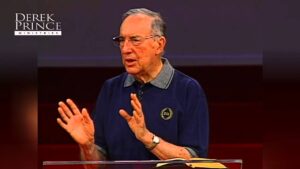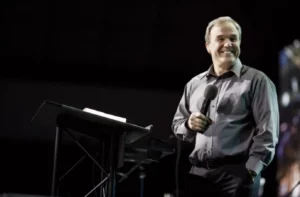
The Galilee Project
Restoring the Church to the Original Blueprint
“ This picture of the Galilee was taken from the shore at Capernum ”
Back to Basics
A Return to the New Testament Church of the Book of Acts
There are many of us who believe the New Testament Church of the Book of Acts is the model we should follow. Yet today, you would be hard pressed to find any churches operating in that power and purpose. Many of today's beliefs, traditions, doctrines and governmental structure would be unrecognizable to Paul and the Apostles. For a brief time in the 1970s, hundreds of us lived, worked and experienced a church built upon that model, and we weren't perfect and we weren't the only ones.
After the June 1967 Six Day War where Israeli Defense Forces took back Jerusalem and stood on the Temple Mount for the first time in 2000 years, the Lord started pouring out His spirit on a new generation, especially on Jews. In the 60s and 70s we saw foundations being laid for Book of Act churches all over the world. Today, almost all of these are in a state of disrepair. But now the Lord is calling a new generation to repentance so that they can, as Isaiah says, "Rebuild the ancient ruins and raise up the age-old foundations; you shall be called the repairer of the breach, the restorer of streets to dwell in."
When God starts to move it comes as a time of great shaking. That everything that can be shaken, will be shaken. This shaking includes judgment and a burning away of the hay, wood and stubble used to build many churches and ministries. A tearing down of pastor driven churches, priest driven churches, personality driven churches, and seeker friendly churches. Peter says, "For the time is come that judgment must begin at the house of God: and if it first begin at us, what shall the end be of them that obey not the gospel of God?"
The Galilee Project -- A Short History
In late August 2012, as I sat under the gooseneck of my horse trailer at 7,000 feet in Flagstaff, Arizona, the Lord spoke to me:
“Rick, I’m rebuilding My Church, and I’m starting in the Galilee. Nothing will stand against it—not the gates of hell, not the Devil, not the nations of the world, and most importantly, not the religious Christian leaders of today.”
(My immediate thought was, “Lord, they are all Your churches.” But the answer I heard was simply, “No.”)
Then the Lord went on:
“Rick, I’m a Galilean, just as Mitch (my friend Mitch Kersh) is a Texan. You can take Mitch out of Texas, but you can’t take Texas out of Mitch.”
It became clear to me: as Mitch has a Texas drawl, Jesus has a Galilean accent. Scripture confirms this. After Jesus’ arrest, Peter sat outside in the courtyard when a servant girl said to him, “You also were with Jesus the Galilean” (Matthew 26:69).
Later, others confronted Peter: “Surely you are one of them, for you are a Galilean; your accent betrays you”(Mark 14:70).
The Lord then emphasized:
“It is The Galilee Project—not a Galilee project, not Galilee Project, but The Galilee Project.”
As I sat there under the trailer, I wrestled with the meaning. Why was the Lord pointing out His Galilean identity? I had friends living in the Galilee. I had just been there a year earlier. But why start in the Galilee? Why not Texas? Why not Kansas City? Why not even Jerusalem? Does this rebuilding begin physically in the Galilee, or is the Galilee a model—like the “Jerusalem model” or the “Antioch model” of church life and government that the Lord showed me in the 1970s?
Forty Years Earlier
Back in the fall of 1972, the Lord had spoken to me in much the same way—about His Church, its original blueprint, its divine order, and the governmental structure designed both to safeguard against doctrinal error and to fulfill His purposes.
He showed me how the early church functioned under Paul’s leadership, and why there must be a restoration of apostles and prophets that our Father had first mentioned to me.
The teaching series that came from this was called Grace & Government, which we began putting into practice in our fellowship in Kansas City.
Yeshua (Jesus) in the Galilee
The Galilee is where Jesus first established His ministry, performed His first miracles, called His disciples, and appointed His apostles. It is where He first declared the message of the Kingdom of God, and where He returned after His resurrection.
The Father chose the Galilee as the earthly home of His Son, Yeshua. (No, He did not choose Texas.) The first three Gospels emphasize that the majority of Jesus’ public ministry occurred in the Galilee region.
* Of Jesus’ 32 parables, at least 19 were spoken in the Galilee.
* Of His 37 recorded miracles, about 25 were performed there.
* His first miracle took place in Cana of Galilee (John 2).
* After His resurrection, His final miracle—providing breakfast on the shore of the Sea of Galilee—also happened there (John 21).
In the Galilee, Jesus delivered the Sermon on the Mount, proclaimed the Bread of Life discourse, taught on purity, forgiveness, and humility, walked on water, and twice fed thousands with a few loaves and fish. It was in this region that He cast seven demons out of Mary Magdalene of Magdala—who would become the first witness of His resurrection.
After His resurrection, the angel told the women at the tomb:
“Do not be afraid, for I know you seek Jesus who was crucified. He is not here, for He has risen, just as He said. Come, see the place where He lay. Then go quickly and tell His disciples, ‘He has risen from the dead, and behold, He is going before you into Galilee; there you will see Him.’” (Matthew 28:5–7)
In fact, three times in Matthew’s Gospel, Jesus directs His disciples to meet Him in Galilee after His resurrection.
Why Galilee, Not Jerusalem?
Why did Jesus not have them remain in Jerusalem, the city of His crucifixion and resurrection? After all, in Luke 24:46–49, He instructed them to tarry there until they received the Holy Spirit. Jerusalem is also where He said:
“The Messiah will suffer and rise from the dead on the third day, and repentance for the forgiveness of sins will be preached in His name to all nations, beginning from Jerusalem.”
So why Galilee?
One reason is this—and I believe it is what I heard from the Lord: Jesus had already started His Church in the Galileeduring His earthly ministry. Yes, this challenges the popular teaching that the Church began only at Pentecost. Pentecost was the empowering of the Church by the Holy Spirit, but the foundation had already been laid. The day Jesus called His first disciples by the Sea of Galilee was the day His Church began.
The proof text for this is found in Acts 2:42, where Luke describes the life of the early believers:
“And they devoted themselves to the apostles’ teaching and the fellowship, to the breaking of bread and the prayers.”
Every one of these four functions was already in operation in the Galilee with Jesus and His disciples:
* The apostles’ teaching – Jesus Himself was the Teacher in the Galilee, expounding the Scriptures and proclaiming the Kingdom of God.
* Fellowship – They lived life together, walking from village to village, eating, serving, and sharing daily life in community.
* The breaking of bread – From intimate meals in homes to multiplying loaves and fish for the multitudes, Jesus modeled table fellowship as a sign of the Kingdom.
* The prayers – Jesus prayed with His disciples, taught them to pray (“Our Father in heaven…”), and drew them into His own life of communion with the Father.
In every sense, Jesus carried out in the Galilee the ministry functions we now attribute to the Church.
The Prophetic Significance of Galilee
But there is also a deeper reason: Galilee was chosen by God from the beginning. Isaiah prophesied:
“In the past he humbled the land of Zebulun and the land of Naphtali, but in the future he will honor Galilee of the nations, by the Way of the Sea, beyond the Jordan—The people walking in darkness have seen a great light; on those living in the land of deep darkness a light has dawned.” (Isaiah 9:1–2)
Galilee was not the religious center of Judaism—that was Jerusalem. Galilee was considered backwater, mixed with Gentile populations, despised by the religious elite. Yet God chose the very place most looked down upon to be the stage for the dawning of Messiah’s ministry. When Jesus settled in Capernaum by the sea (Matthew 4:13–16), Matthew tells us it was to fulfill Isaiah’s prophecy.
Galilee was “Galilee of the nations”—a crossroads where Jews and Gentiles mingled. It was the perfect place for the Kingdom message to be launched, for the Church would not remain Jewish alone but would include every tribe, tongue, and nation.
Back to the Galilee
So why Galilee and not Jerusalem? Because Galilee was where Jesus first laid the foundation of His Church, lived out Acts 2:42 with His disciples, and fulfilled Isaiah’s prophecy of light breaking into darkness. Jerusalem would be the city of the cross, the resurrection, and the outpouring of the Spirit. But Galilee was the place of beginning, the place where the blueprint was first revealed.
It is fitting, then, that in this hour of restoration, the Lord would once again point us back to where He began—back to the Galilee.
The Church Age
Now, as the Lord reestablishes His Church according to the original blueprint, we must discern how to play our part.
In this present age, Jesus the Galilean sits at the right hand of the Father. He is already King of kings and Lord of lords, yet He will not take His rightful seat on David’s throne until the Messianic Era. Until then, we are entrusted with His commission in this Church Age.
The purpose of this website is to explore the possibilities. To hopefully start a dialogue.
Talking Points
I believe the apostolic writings of the first century give us a look at the blueprint for Jesus' church.
- What is the model, or blueprint, of the church in the Book of Acts? Where do you find the blueprint? What would it take to implement, to bring the Church back to its original intent?
- The church is at a crossroads concerning the destiny of America, Israel and the church itself. It is time we learn the Lord’s original intent and how to produce it. In America it is easy to study the original intent of the founding fathers because they left so many documents, with the church, it is different.
- We know the bible is not a systematic study of how to produce Yeshua’s church. He’s waiting on the men called from the foundation to learn His way and do it His way.


